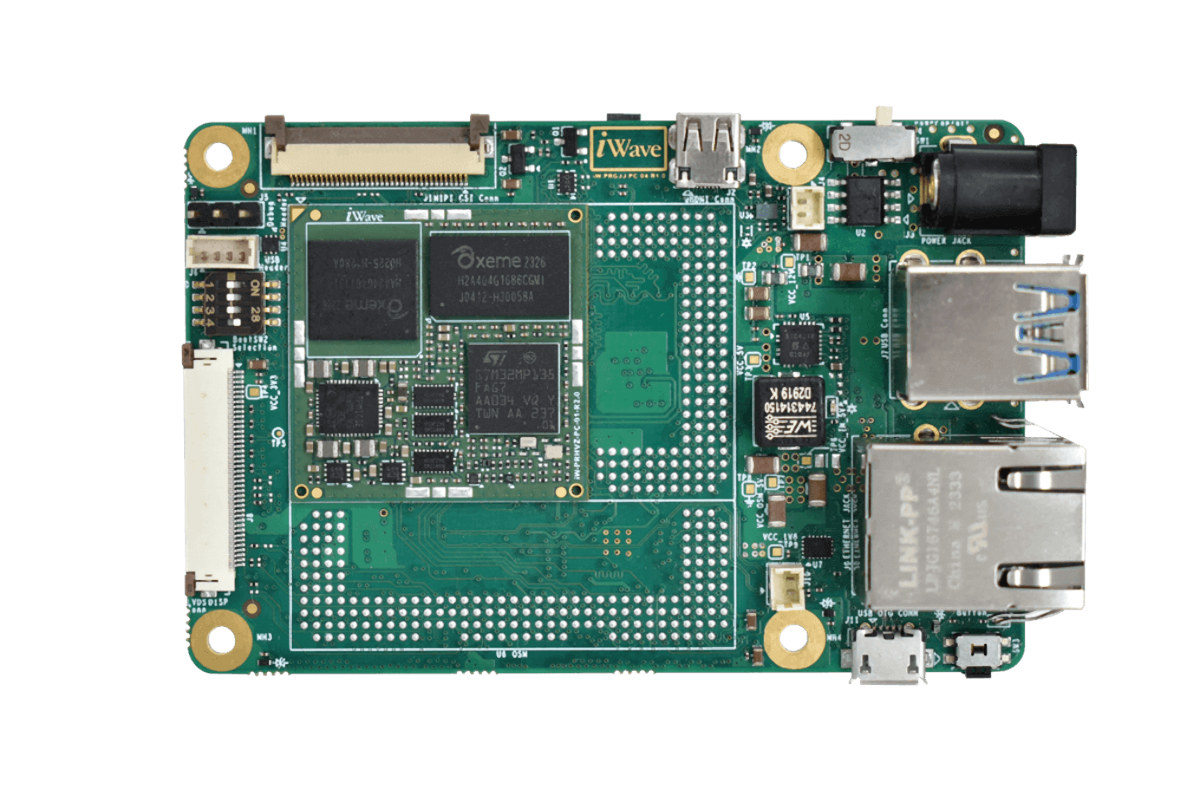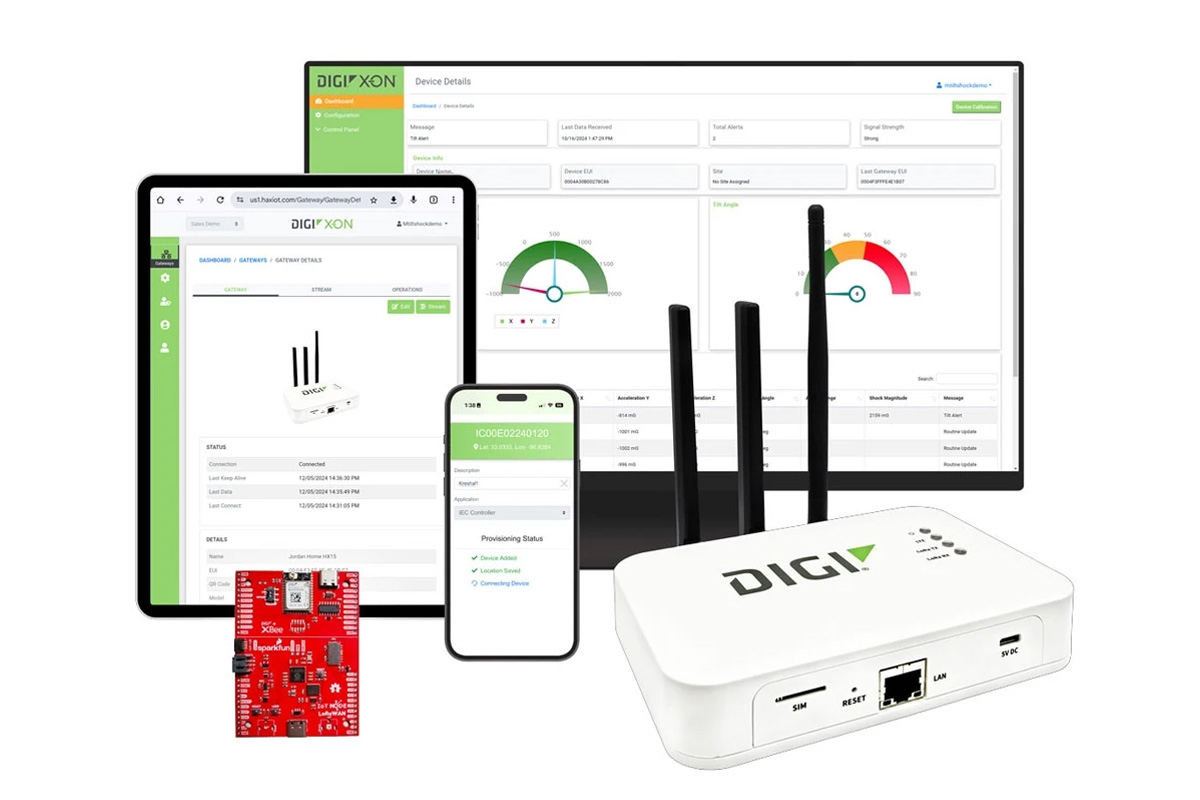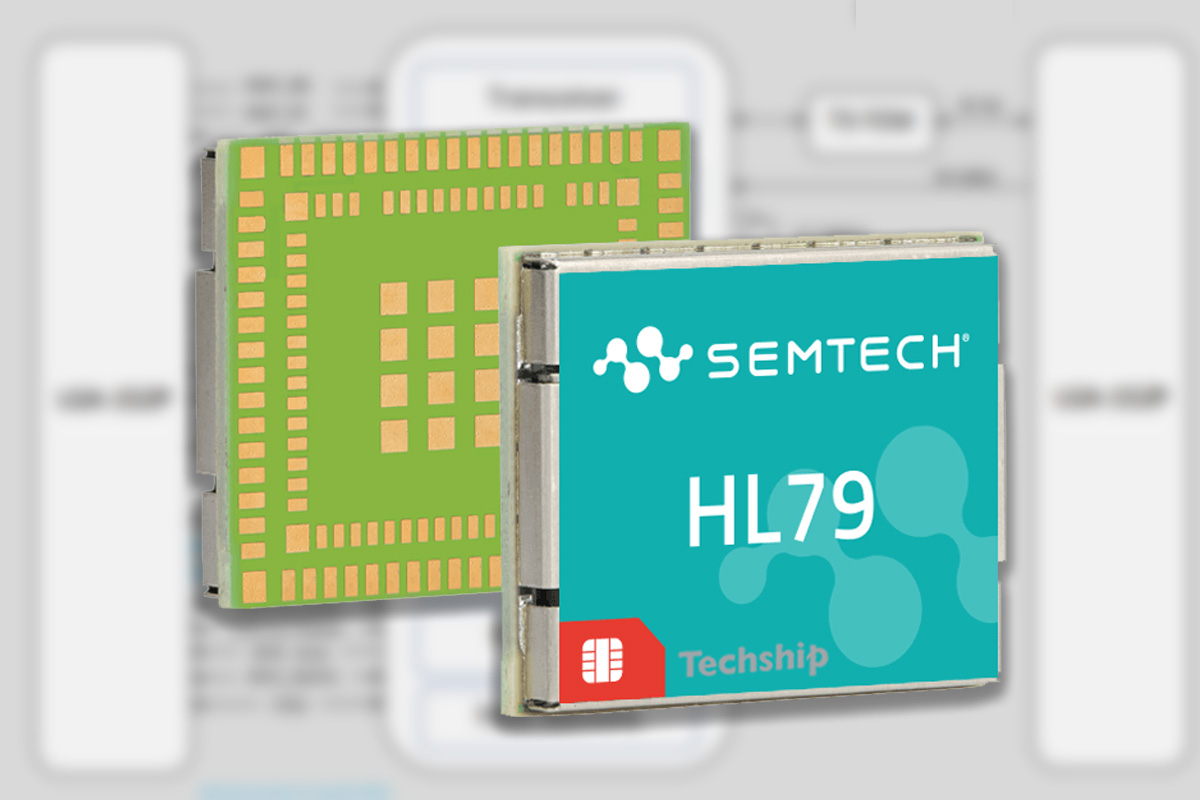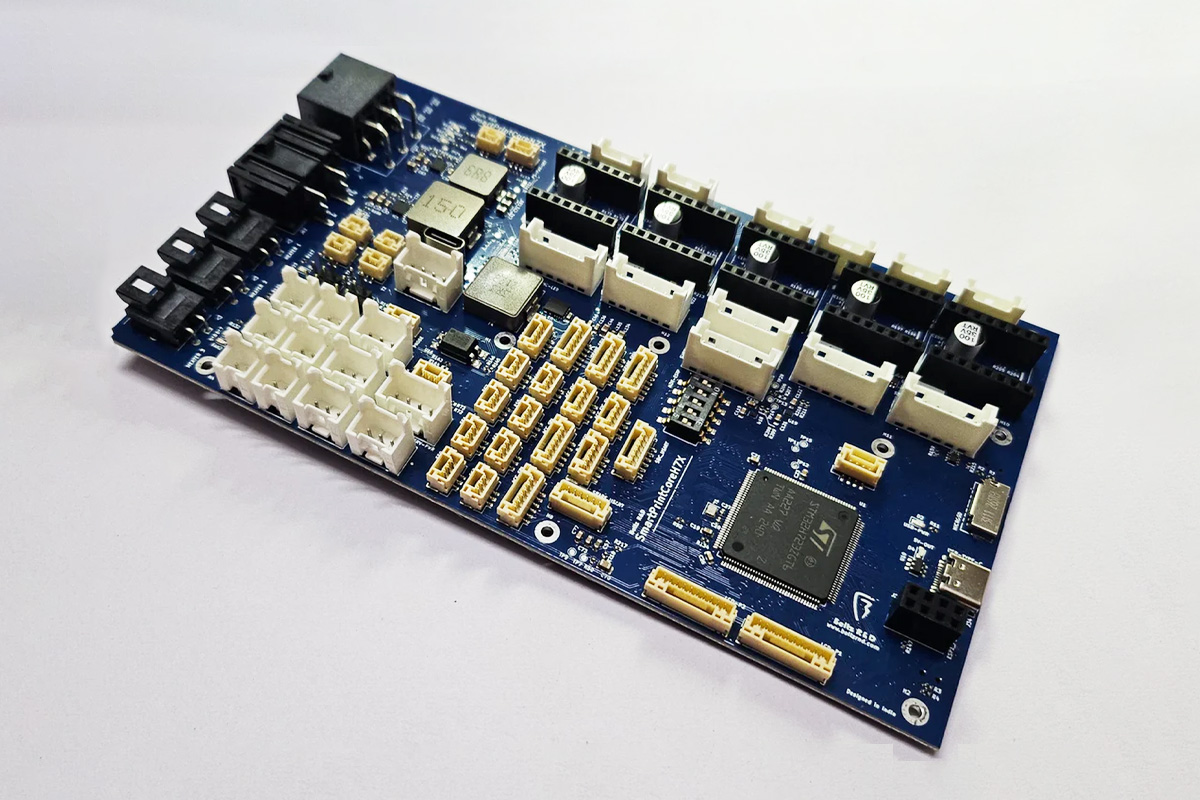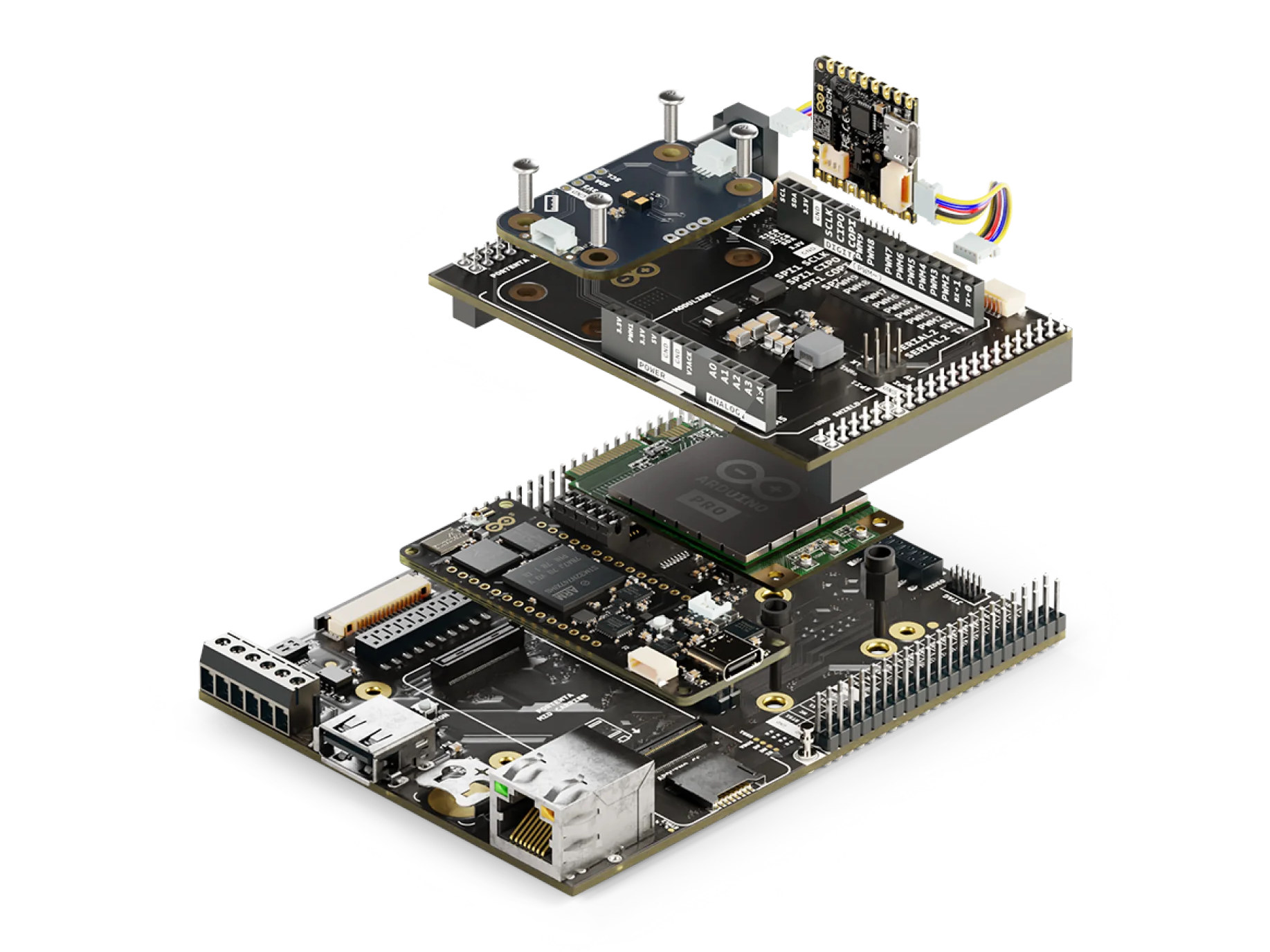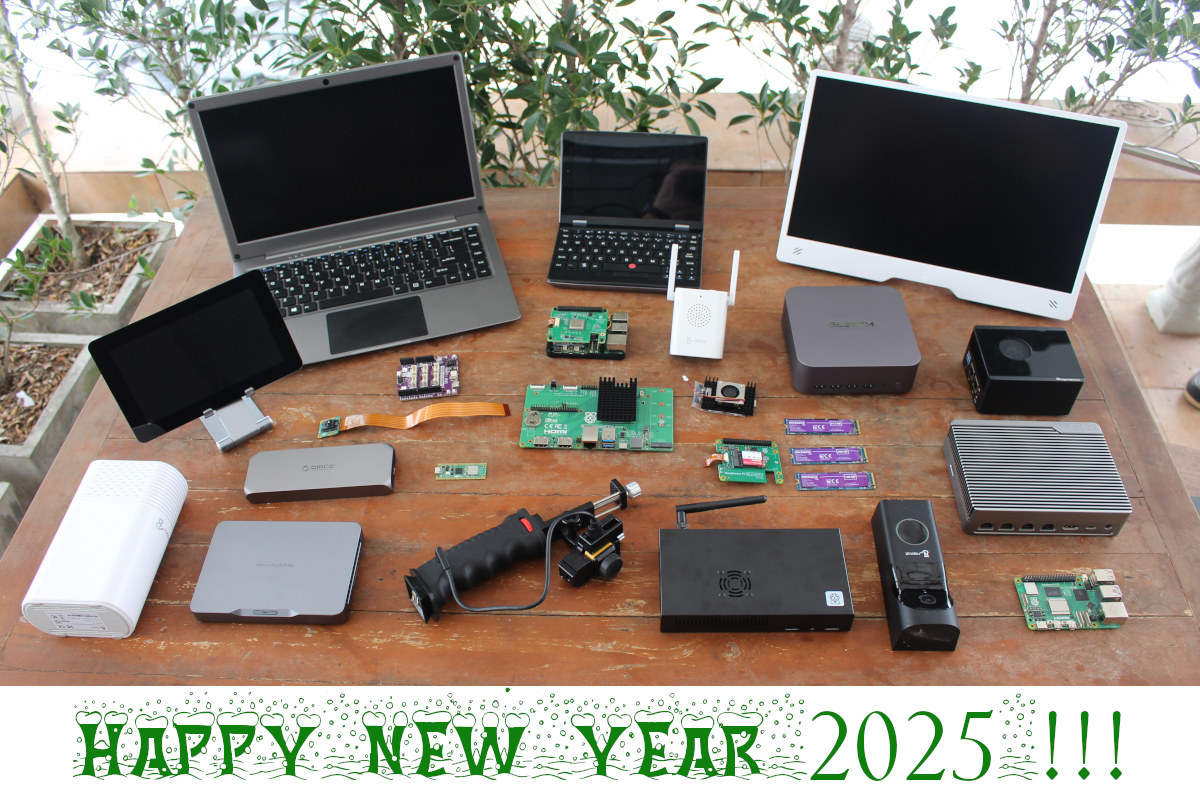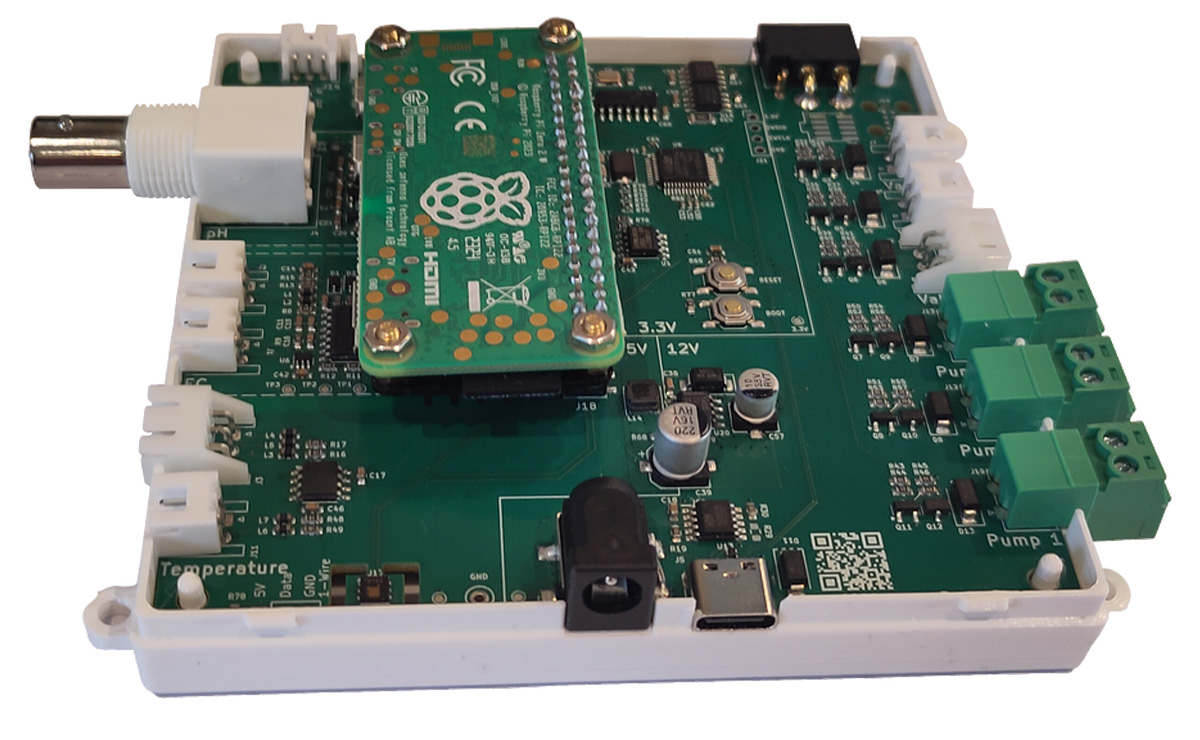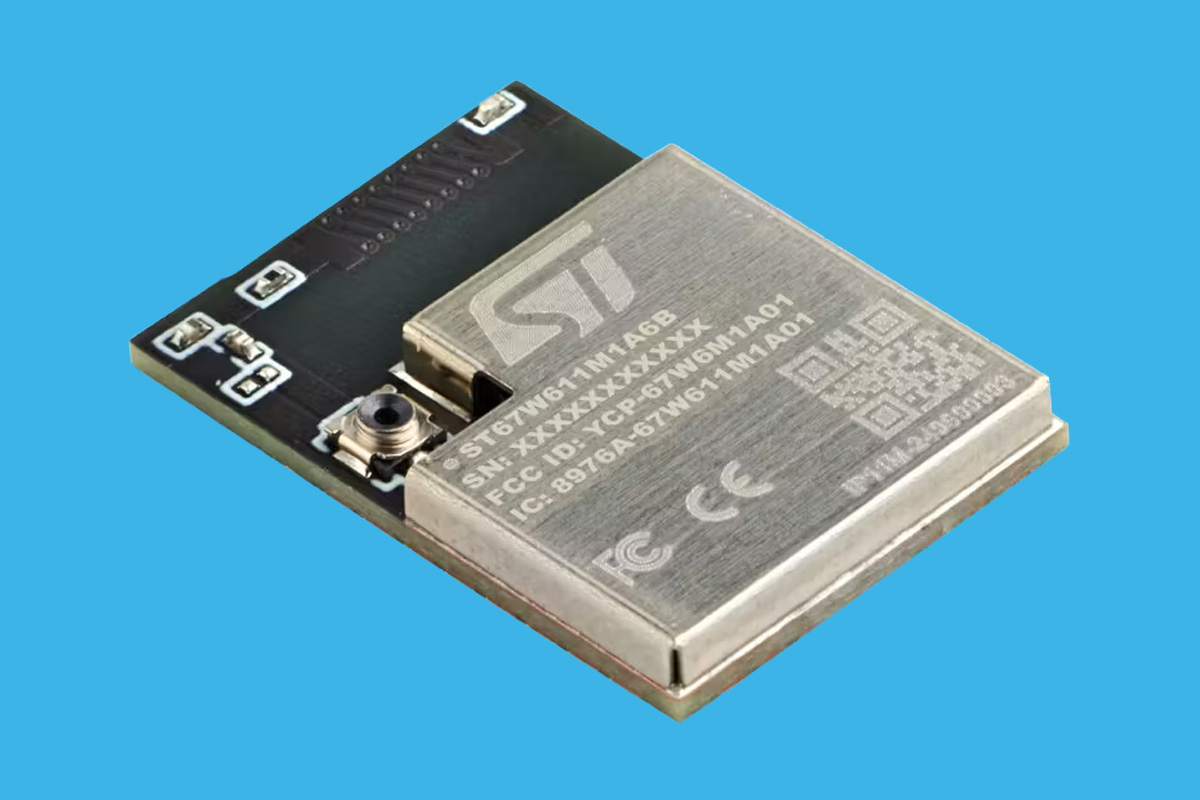iWave Systems iW-RainboW-G54S is a credit card-sized SBC fitted with an OSM Size-S (30x30mm) system-on-module based on STM32MP133 or STM32MP135 Cortex-A7 SoC with up to 1GB RAM, and up to 128GB flash. Interfaces include a Gigabit Ethernet port, a USB Type-A port, an 18-bit RGB LCD display interface, and three 100-pin high-density connectors for additional I/Os. The iW-RainboW-G54S SBC is designed for industrial applications with a temperature range of -40 to +85°C. While it’s fitted with an OSM Size-S module, we’ll also notice the carrier board has a footprint for OSM Size-M (45x30mm) and OSM Size-L (45x45mm) modules indicating it will be used with other OSM modules in the future. iWave Systems iW-RainboW-G54S specifications: System-on-Module – iW-RainboW-G54M SoC (one or the other) STMicro STM32MP133 single-core Cortex-A7 with or without Secure boot + Cryptography; for headless applications STMicro STM32MP135 single-core Cortex-A7 with or without Secure boot + Cryptography; supports LCD-TFT parallel […]
SparkFun Digi X-ON LoRaWAN development kit combines Digi HX15 gateway with RP2350 IoT node and environmental sensors module
SparkFun has recently released the Digi X-ON LoRaWAN development kit an all-in-one IoT development kit designed to simplify the setup and deployment of LoRa-based IoT systems. It includes the Digi HX15 Gateway, SparkFun IoT Node for LoRaWAN, and the ENS160/BME280 environmental sensor, enabling rapid prototyping and connectivity with the help of the Digi X-ON cloud platform. The SparkFun IoT Node is built around the Raspberry Pi RP2350 microcontroller, which features 16MB flash, 8MB PSRAM, multiple GPIOs, LiPo battery support, microSD storage, and USB-C connectivity. It also integrates the Digi XBee LR module for long-range LoRaWAN communication with pre-activated cloud connectivity. With an onboard Qwiic connector and Arduino support, this development kit is ideal for applications like industrial monitoring, environmental sensing, smart agriculture, remote data collection, and more. Digi HX15 gateway specifications Microprocessor – STMicro STM32MP157C MPU with dual-core Cortex A7 @ 650 MHz, Cortex-M4 @ 209 MHz with FPU/MPU, 3D […]
Altair ALT1350 based HL7900 5G LPWA module supports Wi-SUN, GNSS, and NB-IoT over non-terrestrial networks
The HL7900 5G LPWA module from Semtech (Sierra Wireless) is a globally certified solution built around Sony’s Altair ALT1350 chip and designed for low-power IoT applications. It is certified by major U.S. carriers, including AT&T, T-Mobile, and Verizon, as well as Japan’s KDDI, and has achieved global regulatory certifications (FCC, CE, ISED, etc.) and industry certifications (PTCRB, GCF) for carrier interoperability. This chip features an ultra-low-power sensor hub MCU for efficient environmental monitoring. Additionally, it includes integrated sub-GHz and 2.4GHz radios supporting short-range protocols such as Wi-SUN including U-Bus Air, NB-IoT, and 5G NTN along with GNSS and Wi-Fi-based indoor/outdoor tracking. Furthermore, this chip supports embedded SIM support, secure edge-to-cloud connectivity, and over-the-air updates. These features make this chip useful for applications such as asset tracking, urban navigation, and other IoT solutions requiring reliable, low-power connectivity with global reach. Semtech HL7900 specifications: MCU – Sony ALT1350 5G cellular IoT chip […]
STM32H7-powered open-source hardware 3D printer mainboard supports up to 6 stepper drivers
Designed by Boltz R&D, the SmartPrintCoreH7x 3D printer mainboard is an open-source mainboard built around an STM32H7 microcontroller and designed to work with 3D printers from Creality, Anet, and Voron. It supports up to 6 stepper drivers (5 standard drivers plus 1 dedicated driver) and can be expanded further using the “SmartPrintCore Extravaganza” module for additional stepper drivers. Key features of this motherboard include a jumper-less setup, automatic power source switching, and support for both 12V and 24V power supplies. It uses high-efficiency TI buck converters to provide power for multiple fan and servo ports, and there is a dedicated power supply for peripherals, SBCs, and Wi-Fi modules. The board is equipped with a variety of connectors, including Molex, Ultra-Fit, Mini-Lock, and JST-GH for power, motors, and peripherals. SmartPrintCoreH7x specifications: MCU – STMicro STM32H723 Arm Cortex-M7 32-bit core @ 550 MHz with 1MB Flash, 564 KB RAM, FPU, DSP, Ethernet, USB […]
Arduino Portenta Proto Kit ME aims to ease prototyping for professionals
Arduino has introduced the Portenta Proto Kit ME (Motion Environment) at CES 2025 with the kit designed to allow engineers, designers, and innovators to turn ideas into functional prototypes quickly. The kit does not include new hardware, but it is based on the Arduino Portenta H7, Mid Carrier, and Nicla Sense ME module, as well as other off-the-shelf parts such as a 4G LTE and GNSS module and some Modulino modules, plus three months of Arduino Cloud access. The company expects the prototyping kit to be used for predictive maintenance, environmental sensing, and industrial automation prototypes. Arduino Portenta Proto Kit ME kit content: Portenta H7 board based on STMicro STM32H747 Arm Cortex-M7 @ 480 MHz + M4 @ 200 MHz MCU capable of handling ML workloads and advanced processing Portenta Mid Carrier with gigabit Ethernet, USB 2.0 port, MIPI CSI and Arduino camera connectors, CAN Bus, mPCIe socket, GPIO header, […]
CNX Software’s 2024 Year in review, website statistics, and what to expect in 2025
That’s it! 2024 is almost over, and it’s time to reflect on what happened during the year. So I’ll look at the highlights of 2024, share some CNX Software website traffic statistics, and speculate on what may be ahead of us in 2025. Looking back at 2024 Raspberry Pi was super active this year with 22 product launches that included boards and modules like the Raspberry Pi 5 with 2GB RAM, Raspberry Pi Pico 2 and Pico 2 W, Raspberry Pi CM5, expansion modules like the Raspberry Pi AI camera, AI HAT+, and M.2 HAT+, new accessories such as the Raspberry Pi Touch Display 2 and the Raspberry Pi Monitor, and the new Raspberry Pi 500 keyboard PC among others. As usual, there was also plenty of announcement of accessories from third parties, and some boards with the new Raspberry Pi RP2350 Arm/RISC-V microcontroller. There weren’t any ground-breaking Arm processors […]
RootMaster is a Raspberry Pi Zero 2W-based hydroponic automation system with STM32G4 MCU, CAN Bus, sensors
The RootMaster is a Raspberry Pi Zero 2W-based hydroponic automation system designed to precisely manage water and environmental conditions. The solution also integrates an STM32G4 microcontroller to handle real-time operations such as controlling pumps and peripherals, managing sensors, and processing data from external sensors like water level indicators. It also generates PWM signals to control the power of connected devices and handles communication with external modules through a CAN FD interface. While STM32 handles hardware-level tasks, the Raspberry Pi Zero 2W manages high-level control and user interaction. The RootMaster can be programmed with Python, C, C++, or other programming languages and is useful for applications like Hydroponics automation, water circulation, and environmental control. RootMaster specifications MCU – STMicro STM32G473 32-bit Arm Cortex-M4 microcontroller @ 170 MHz for real-time operations Main controller – Compatible with Raspberry Pi Zero 2 WH for GUI and other interfaces Sensors pH sensor for nutrient solution […]
STMicro ST67W611M1 IoT module features Qualcomm QCC743 SoC with Wi-Fi 6, BLE, and 802.15.4 radios
ST Microelectronics has introduced the ST67W611M1 IoT module developed in partnership with Qualcomm and integrating the latter’s QCC743 multi-protocol connectivity chip with Wi-Fi 6, Bluetooth 5.3 Low Energy (BLE), Thread-compatible IEEE 802.15.4 connectivity, and support for Matter-over-Wi-Fi. Additionally, it features 4MB of flash storage and provides options for a PCB or external antenna via a uFL connector. The module is designed to connect with STMicro’s STM32 microcontroller and microprocessor families through SPI and/or UART, making it easy to add wireless connectivity to STM32-based projects, including those using the new STM32N6 chips with an in-house Neural-ART machine learning accelerator. These features make this chip suitable for smart home devices, industrial IoT systems, wearables, healthcare monitors, and connected appliances. ST67W611M1 specifications: Wireless Connectivity Wi-Fi 6 with up to 20 dBm output power Bluetooth Low Energy 5.3 with 2 Mbps throughput Thread support Supports Matter protocol over Wi-Fi for future-proof connectivity Storage – […]


